Cool Designs Cool Easy to Drw Designs That Have to Do With Ticks
Symbols are words, shapes, marks, or signs that stand for certain meanings in logo design and branding. All the words we speak and the shapes we see, even the sounds we hear, are symbolic of some meaning. Understanding of the basic shape psychology also helps in effectively using symbols in brand identities.
When we see a red hexagon on the top of a pole on a roadside, we immediately recognize it to mean 'stop'. The 'check' mark or the 'tick' mark signifies work well done, something that's taken care of; or done correctly or even a brand like Nike. Even our names are intended to represent us; they are symbols of individuals, we could say.
In this article, and the next post on famous symbols, we will explore the origins of some of the most famous symbols in the world and uncover the stories behind them. It's going to be an interesting read. And while we don't claim that our storytelling will be as riveting as Dan Brown's Professor Langdon's, we're going to try our best.
1. The Heart Symbol
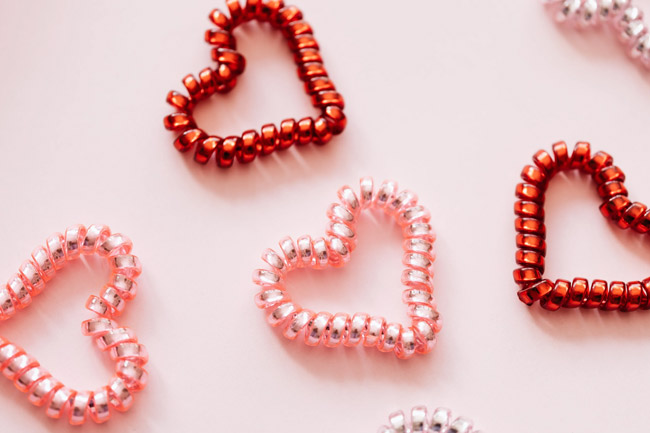
Image Source: Pexels
While the modern culture of today depicts the heart as a symbol of romantic love, it was not always so. There are a few theories surrounding the earliest use of the heart- shaped symbol in logo design and how its meanings evolved over the centuries.
In the earliest times, 7th century BCE Egypt, the heart symbol was a representation of a popular herbal contraceptive in health logos of that time: the plant Silphium. It was such a popular and effective herb that it was over-cultivated and had gone extinct by the 1st century BCE. But while it flourished, it made countries rich and popular. It was also a very versatile plant. From its roots to its resin, every part of it was useful and proven to treat ailments such as coughs, sore throats, and even leprosy and wart removal.
It was so popular that the plant was depicted on official currencies of Cyrene (present-day Libya) where this plant was heavily cultivated. Historians have also found coins where the seed of Silphium has been engraved to mark it official.
Garden Logos
Landscaping Company Logos
Nanny Service Logos
Handyman Logos
And do you know what the seed of Silphium looks like?
The heart shape.

Image Source: Railyard Apothecary
So how did the seed of Silphium come to be translated to mean the shape of the human heart in later years?
It happened in the early 14th century when an Italian painter Giotto drew a painting that depicted the Christian virtue Charity handing her heart to Jesus Christ. This heart is painted in the shape of a pine cone that is held upside down and portrays a shape very similar to the modern heart.
From then on, other painters and artists picked up on the trend and eventually the heart came to symbolize love, and later, romantic love.
However, there is another theory, an earthier one that attributes the meanings of romantic or sexual love associated with the heart shape to the shape of certain organs of the female body. Which organs these might be, we leave it to you and your Google search.
Explore: Heart Logo Designs
2. The Trinity Knot Symbol
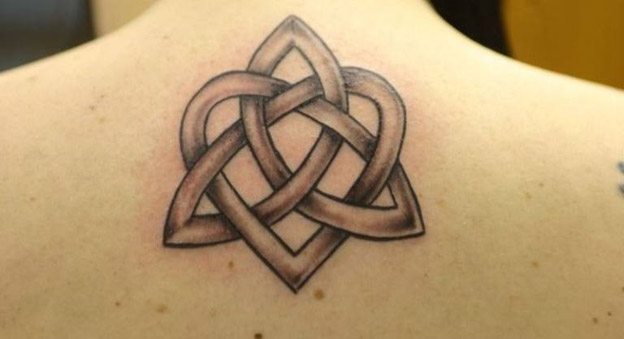
Image Source: TatoosWin
The Trinity knot is known by many names: Irish Love Knot, the Celtic Knot, and Celtic Love Knot, among a few. It is also called Triquetra, meaning 'three-cornered' in Latin. It is called so because the design uses three arcs that are interlaced. The knot is a popular Celtic symbol and holds deep religious meanings for the Celtic Christian church and in some cults, this symbol is used for church logos.
But before the church adopted it as its own, it stood to mean something else. But what exactly, no one is sure. For example, it appears on ancient Indian heritage sites that are thousands of years old. Historians and archeologists have found it engraved on ancient German coins, carved on stones in Northern Europe of the 8th century AD, and even present on ancient architecture as decorative symbols.
Then, of course, it has also been found decorated on the Book of Kells; not to mention that pagans and Wiccans claim it as their own and use it to represent the protective symbol of the Triple Goddess.
So exactly what are the origins of the Trinity knot?
Hardly one can say for certain. But the modern revival of the Celtic culture has made sure that its Christian meanings of representing the Holy Trinity – the father, the son, and the spirit – prevail as the most popular.
3. The Peace Sign

Image Source: Pexels
Unlike the symbols we've discussed so far, the peace symbol is a rather new and modern sign. Its meanings are also quite uncontested and widely known. However, it is also one of those symbols that was intended to mean something else and came to be associated with something else entirely. However, in this case, the two meanings are not that far apart and can be understood as the same thing.
So what is now known as the international symbol of peace was originally designed as a campaign logo for the anti-nuclear movement, started in the 1950s.
In 1958, British designer and artist, Gerald Holtom was approached by a famous UK peace group Campaign for Nuclear Disarmament, which was fighting for world peace and championing to end the race for nuclear weapons. They wanted a visual symbol that could represent their movement and cause.
The logo gained immediate stardom and was soon adopted as the universal sign of peace and anti-warfare by activists, organizations, and peace groups all over the world.
Presently, it is one of the most widely recognized symbols in the world and adorns banners, t-shirts, logos, and everything else to do with harmony.
4. The Anarchy Symbol
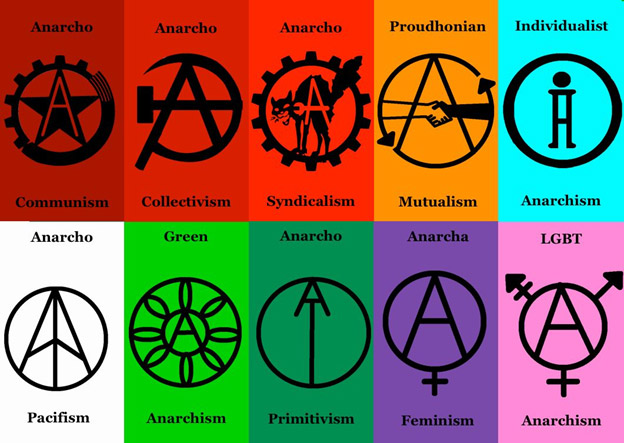
Image Source: DeviantArt
One of the most misunderstood and misinterpreted symbols of modern times; the anarchy symbol is popularly interpreted as a sign of chaos and lawlessness. The intended meaning of the symbol could not be farthest from it. The sign of anarchy was originally designed by the French journalist and libertarian, Pierre-Joseph Proudhon, and consists of the capital letter 'A' surrounded by the capital letter 'O'. The A and O stand for Anarchy and Order. The monogram symbol stands for the phrase: 'Society seeks order in anarchy'.
Anarchy is a political philosophy just like democracy, monarchy, communism, or liberalism. It is a form of governance that rejects the ideas of central, hierarchal authorities in place but in no way it promotes the absence of law. Rather, it encourages a state of existence where communities can create voluntary institutions, laws, and rules that must be followed to ensure equality and justice for all. However, what anarchy doesn't stand for is a central government where authority is placed into the hands of a few and they can have the power to exercise that authority over everyone else. In that sense, anarchy is a highly individualized concept that believes in equality and freedom for all.
As you can imagine, it's for this very reason that the ruling elite usually has a problem with anarchy.
The ideology of anarchy gained huge momentum during the French revolution but it was also the time when it started getting negativity associated with it. The rich and powerful who didn't want to see their authority fade interpreted anarchy as a state of chaos, danger, and destruction.
Unfortunately, these connotations carry to this day. And they gain even more meaning when misinformed or uninformed proponents of anarchy take to the streets and waving the anarchy symbol vandalize properties or put things to fire. Those who oppose anarchy then use such imagery to further their agendas.
But now you know that anarchy is not chaos but order in its most, freest form.
5. The Political Animals

Image Source: National Council of Aging
On the subject of symbols in political logos, perhaps the two well-recognized symbols of American politics – the Democratic donkey and the Republican elephant – are worth a mention.
How these two came into existence are quite interesting stories. While the donkey was a result of a clever political maneuver, both are indebted to the famous political satirist and cartoonist, Thomas Nast, for the widespread recognition, association, and popularity they gained.
In 1828, when the war hero Andrew Jackson was running for president, his opponents started calling him a 'Jackass', in what they thought must have been a clever play on his last name. However, Jackson was too much for them to handle. As a master of turning things into his favor, Mr. Jackson wholly embraced the donkey as his political symbol and started printing it on his campaign posters.
Thomas Nast, who was with the popular magazine Harper's Weekly at the time, started depicting the donkey in his cartoons as a representation of the whole of the Democratic Party. And thus, the Democratic Donkey was born.
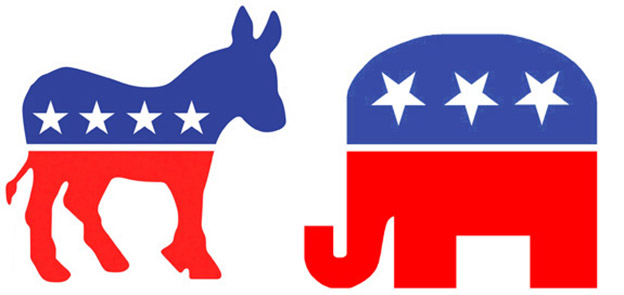
Image Source: Smithsonian
Nast's creation of the Republican elephant was more gradual, however. He first used an oafish elephant to depict the party as a confused and huge being that wasn't sure which way to go (or which policies to adopt) in his popular Third-Term Panic cartoon. In the ensuing years, he used the confused and huge elephant multiple times to portray the Republican Party, and soon the popular association was established.
Later, the party officially adopted it as its party symbol and the rest is history.
Explore: Kickass Political Logo Techniques
6. The All-Seeing Eye
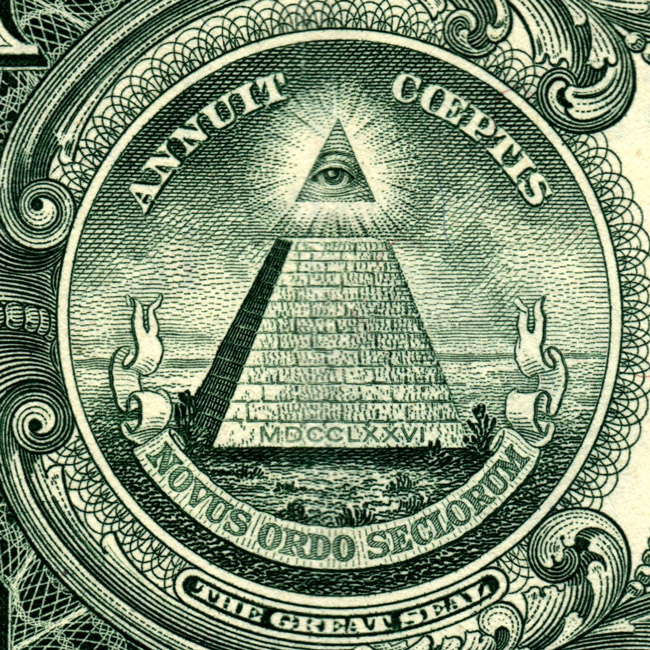
Image Source: The Masonic Philosophical Society
The Eye of the Providence, most popularly known as the All-Seeing Eye of God, is a symbol containing multiple but similar meanings. From the earliest days of the Christian church, the symbol has meant to represent the ever-watchful eye of God. The three corners of the triangle representing the Holy Trinity and the lights emanating from it are the lights of providence, of glory.
Going back even further, we see the eye being used in ancient Egypt times to represent the Eye of Horus, the sky god.
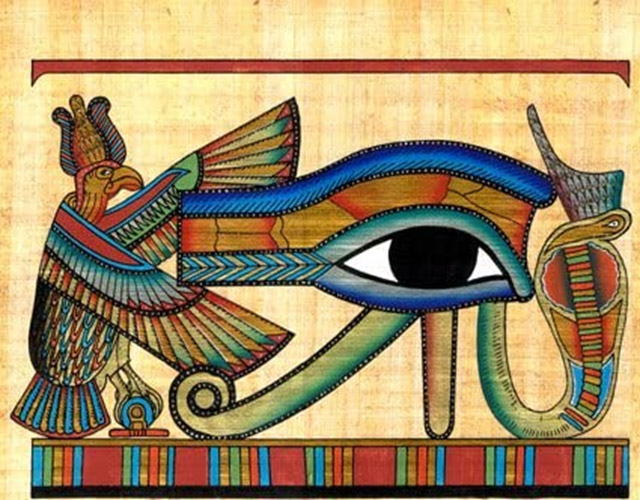
Image Source: Amazon
The all-seeing eye is also part of the Great Seal of the US and is even present on the back of the one-dollar bill atop a pyramid. What is it doing there?
While some conspiracy theorists claim it as a symbol of freemasons and its presence on the Great Seal as a proof of the power and reach of the secret organization, the truth is less sensational. The all-seeing eye atop the pyramid on the dollar bill is just that: the all-seeing eye of God, as the founding fathers of America, were deeply religious men.
As far as the symbol's connection with the Freemasons goes, the truth is, this symbol does not represent the power and ever-watchful Freemasons controlling the world. It means that the organization needs to remain focus on inwards, looking inside and adhering to its strict moral code, and ensuring its principals are not imposed on members of the general public.
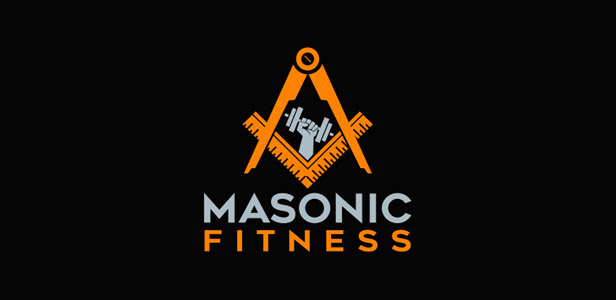
Image Source: ZillionDesigns
So, in short, sorry to burst your conspiracy bubble but it's a pretty straight-forward symbol with rather boring meanings if you are not religious. If you are, well, take comfort in the knowledge that a Divine Power is always watching over you and protecting you.
7. The Swastika
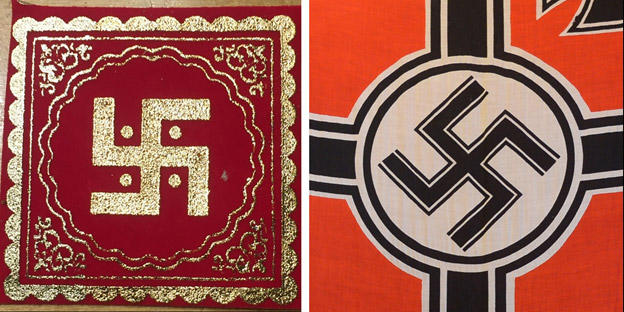
Image Source: Npr
Hardly any symbol on this list is as controversial as the Swastika.
Since thousands of years ago, the Swastika has been revered as an ancient symbol of divinity and spirituality. It spans over multiple religions, cultures, and heritages: Buddhism, Hinduism, and Jainism, to name only a few.
The Swastika is a highly stylized symbol and can be drawn in many ways and directions. And for every variation, its associative meanings also shift. For example, a clock-wise drawn Swastika means light and sun in Hinduism while a counter clock-wise one is used to represent dark forces and night. In Buddhism, it represents the footprint of Buddha, and in Jainism, it's a symbol of a spiritual savior.

Image Source: Lion's Roar
While from the earliest ancient history of human times, the Swastika has always been used to represent spiritual power; its use by the German Nazi party in 1930 made it a sign of terror and racial supremacy in the modern Western world.
It was taken up by the Nazi party as its official symbol and was used to denote the supremacy of the Aryan race. The Nazi soldiers used to wear it and it adorned every asset and representation that had anything to do with Nazi Germany. Unsurprisingly, it quickly became the most feared and hated symbols among the victims of the Nazi party, and even after liberation, its negative connotations refuse to go away. To date, it is associated with sentiments of anti-Semitism and racial intolerance.
Prince Harry of the British Royal family caused a huge scandal several years ago when he chose to wear a Swastika armband in a costume party in 2005. The Royal family and the Prince himself had to issue an apology in the face of the harsh criticism that ensued.

Image Source: Aiga
But while the Swastika may still be a hugely controversial symbol in the Western world, it remains an enduring source of spiritual power in the East. If you're tempted to use it on any of your art and design, however, we highly recommend keeping your target audience in mind at the time of decision.
8. The Sign Of Victory

Image Source: Unsplash
Like most signs and symbols, this gesture also has multiple associative meanings and at least a few interesting origin stories. Some attribute its meanings as insulting, while others hail it as a Victory sign – it all depends where your palm is pointing towards when you make the gesture. The V sign is also used to point out the number 2 and also has meanings in various sign languages.
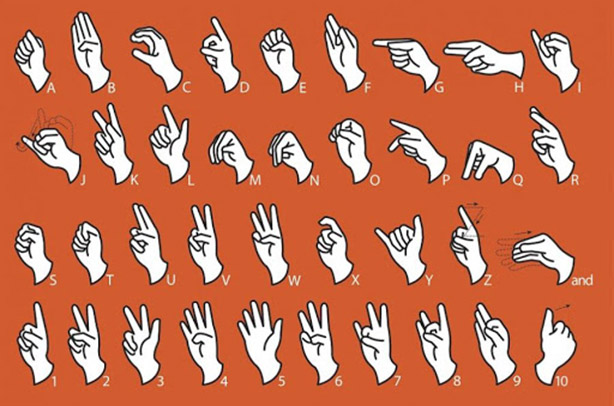
Image Source: Culture Ready
As far as origin stories go, a common legend claims that the sign emerged during the Hundred Years' War as a sign of English valor and defiance against the French. According to the legend, English archers had such a great level of deadly skill that they used to annihilate whole enemy formations just by using their longbows. Their skill and precision annoyed the French so much so that whenever an English archer was captured, the enemy would chop off his bow-fingers (Index and middle one), hence rendering the soldier useless with arrows.
When the news of this assault reached the English archers, they started using their index and middle fingers – slightly parted – and would wave them at the enemy, taunting and mocking him. It quickly became a sign of defiance and bravery.
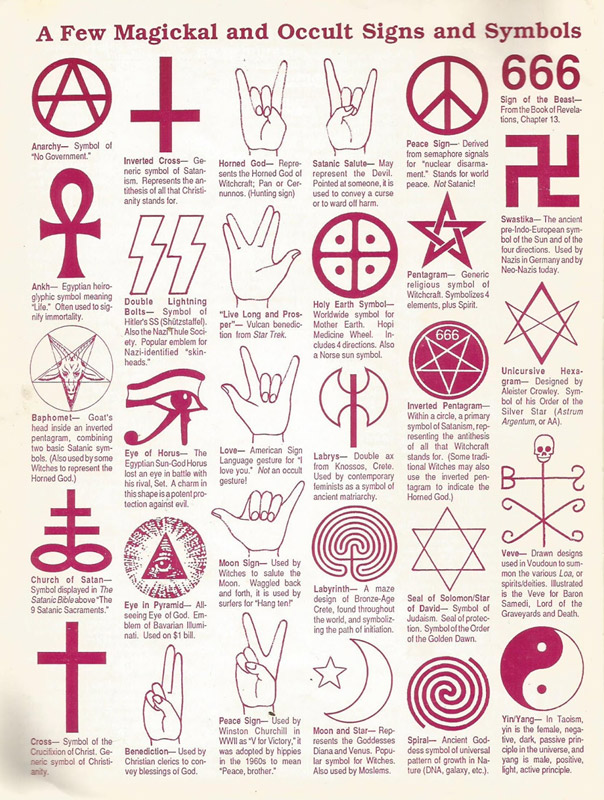
Image Source: Witchcraft, Satanism And Occult Crime: A Manual Of Reference Materials For The Professional Investigator
Or did it?
Interestingly, no written or authentic record of any of this exists in history. While the threat of finger-chopping is mentioned, it's only a threat, and about the first three fingers, not two, because the English longbow was used most effectively with three fingers.
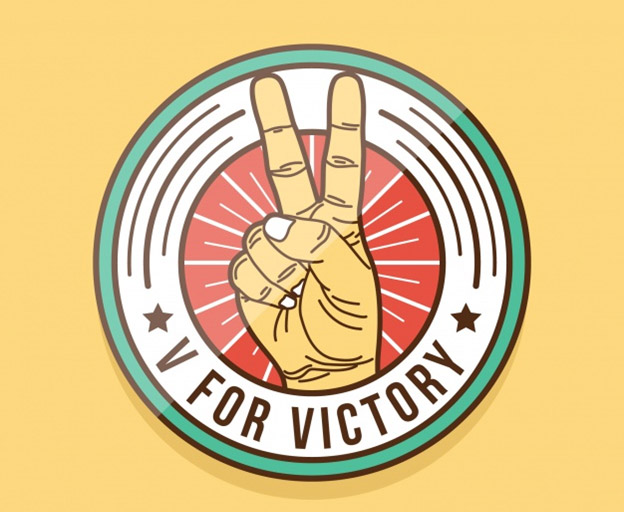
Image Source: Freepik
So while V may not be a sign of defiance, it's a sign of victory. During the Second World War, BBC created it as a sign of victory/freedom through one of its broadcasts, urging its audience to use this sign everywhere to hurt the enemy's morale and to show national courage. Almost overnight, the sign appeared chalked and printed everywhere.
Even Prime Minister Churchill started sporting it regularly out in the public and the parliament. Buoyed by their success, the BBC started a whole V for Victory campaign where the message of the symbol was reiterated and popularized. Pretty soon, the sign became an international sign of peace, friendship, freedom, and victory.
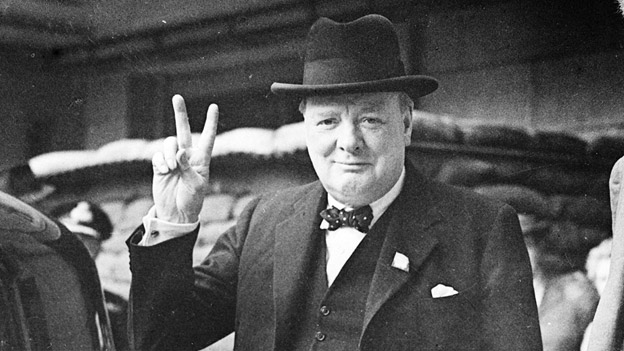
Image Source: The Times
But in some cultures, UK, for example, its meanings can change dramatically if you are displaying the V sign with your palm facing inwards. Then, it becomes a sign of insult and offense – much like a middle-finger sign but only with two fingers.
9. The OK Gesture
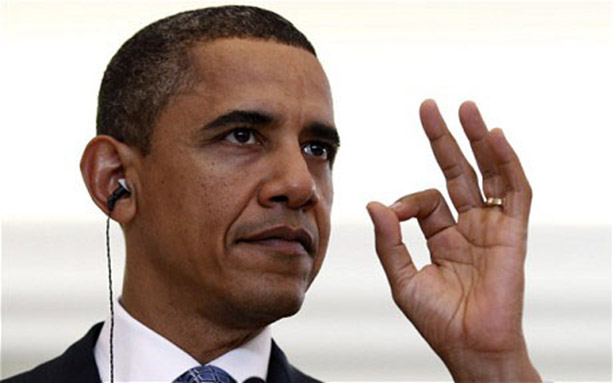
Image Source: The Fourth State
The OK gesture, by joining the tip of the index finger to the tip of the thumb, has always been used as a sign of displaying approval, acceptance, wellness, and perfection. From the early Greek history to the modern Western culture of the 19th century, the gesture has always meant 'all is well'.
But how did the word OK came to be associated with this particular gesture, no one is exactly sure. There is a popular theory that does suggest how it came to rise, however. In 1839, a humorous article in the Boston Morning Post used the expression "O.K" to mean 'all correct'. The reason the piece used misspelled initials is because they were all the rage back in that day. The piece became popular and soon the expression and its misspelled initials gained fame.
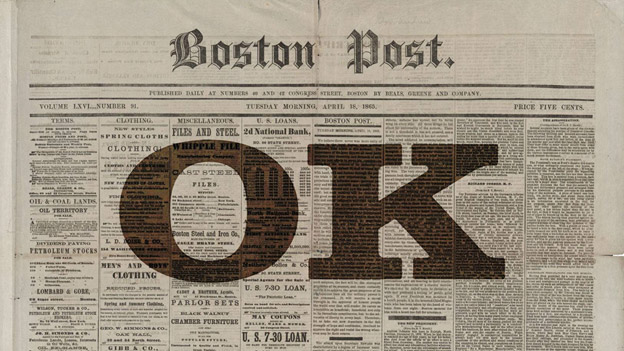
Image Source: WGBH News
It was also later adopted as the initials for 'Old Kinderhook', the nickname of President Martin Van Buren, and his campaign used the initials 'O.K' to also mean that he was the perfect man for the job, that he was OK. Get it?
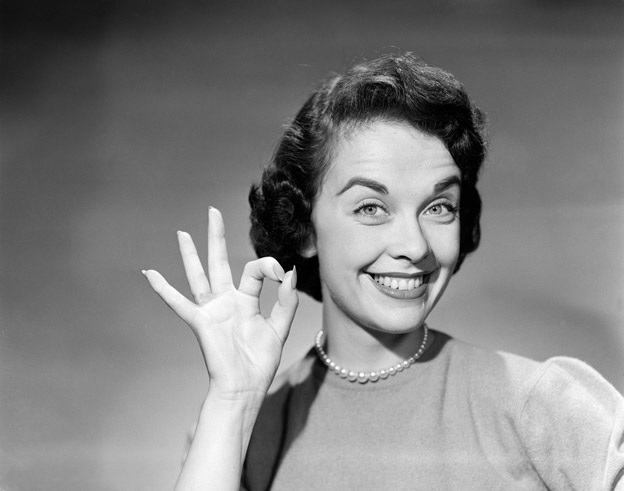
Image Source: Smithsonian
However, recent years have suggested that the OK sign may not be that OK after all. In 2017, hate groups consisting of white supremacists started using the OK hand gesture as a symbol of white power and white supremacy. It gained huge momentum and soon became that much associated with racial hate sentiment that in September 2019, the OK hand gesture was included in the database of hate symbols 'Hate on Display' maintained by a Jewish civil rights group, Anti-Defamation League.
So now you know, there are times when OK is not entirely OK.
10. The Forces Of Yin And Yang
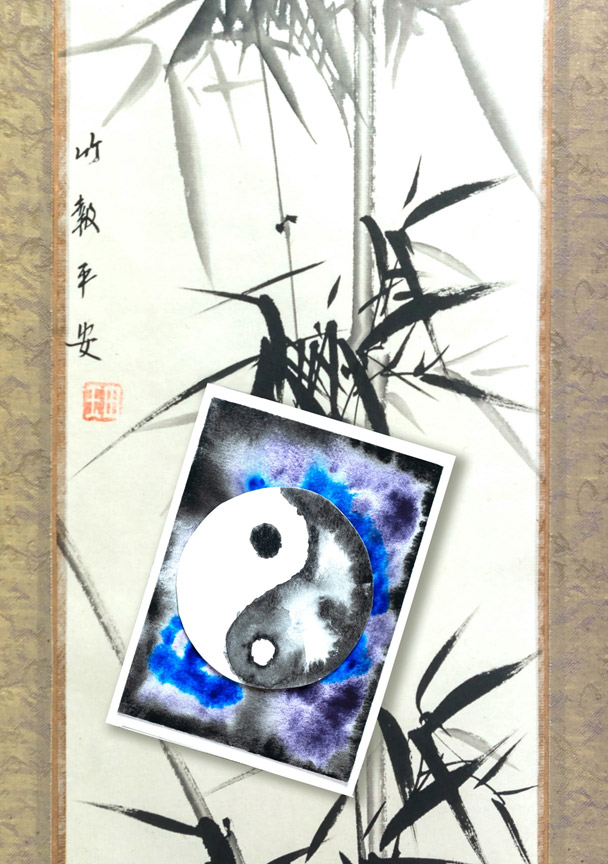
Image Source: Unsplash
Displaying a stark dissimilarity with anything we've discussed so far, the symbol of Yin and Yang offers a consistent and unified history, origin, and meanings.
Born in the ancient Chinese culture of as far back as 1400 BCE, the symbol represents the concept of duality in the cosmic universe. According to the concept of Yin and Yang, the cosmology and universe are composed of interrelated, interdependent, and sometimes opposing, but always complementary forces. Female and male, dark and light, good and bad. According to this concept, everything that exists in this world is composed of both dark and light forces, of male and female aspects, and positive and negative energies.
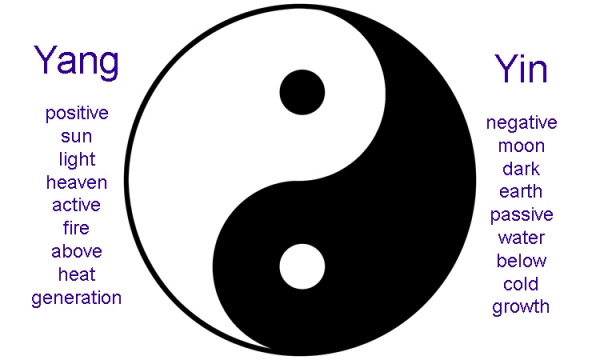
Image Source: The British Association of Urological Surgeons
Yin represents everything feminine, dark, negative, passive, wet, and cold. Yang, on the other hand, is masculine, open, receptive, positive, airy, and light. And there are no clear boundaries in objects or humans or energies where the dark side begins or light ends. Much like the delicate S-shaped curve that's separating the two halves of the Yin-Yang circle, these distinctions are subtle and not always clear, suggesting that sometimes such differences can be perceptual, instead of physical or real.
But the concept is even more complex. Not only does it suggests that we all have both the positive and negative sides within, but the symbol also presents a tiny portion of black on the white area and vice versa. This is taken to mean that even in our positive sides a hint of darkness is always present. And even in our darkest corners, we can still find a ray of light somewhere. The seeds of opposing forces always lie there.
Fundamentally, the symbol and concept of Yin and Yang is the symbol of cosmic balance.
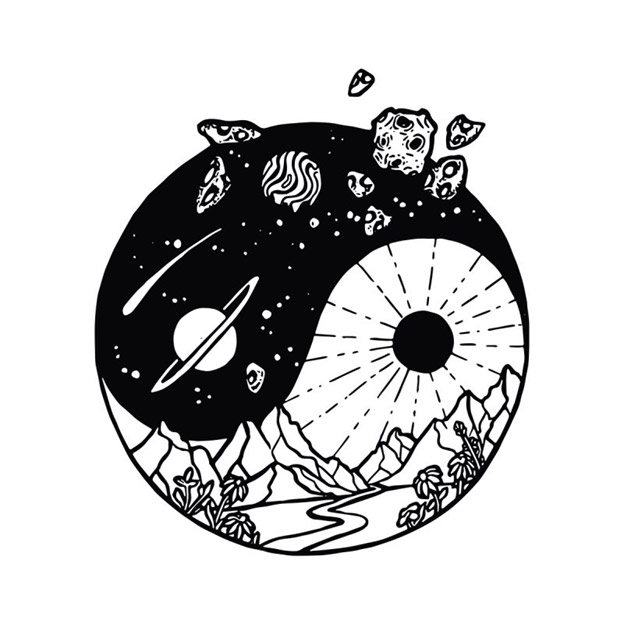
Image Source: Neomli
These opposing forces need each other to survive and exist: there cannot be a shadow without the light. This concept of duality, balance, and interrelated energies is present not only in the Chinese culture and philosophy but is also a strong part of classical Chinese science, medicine, martial arts, and even Feng Shui.
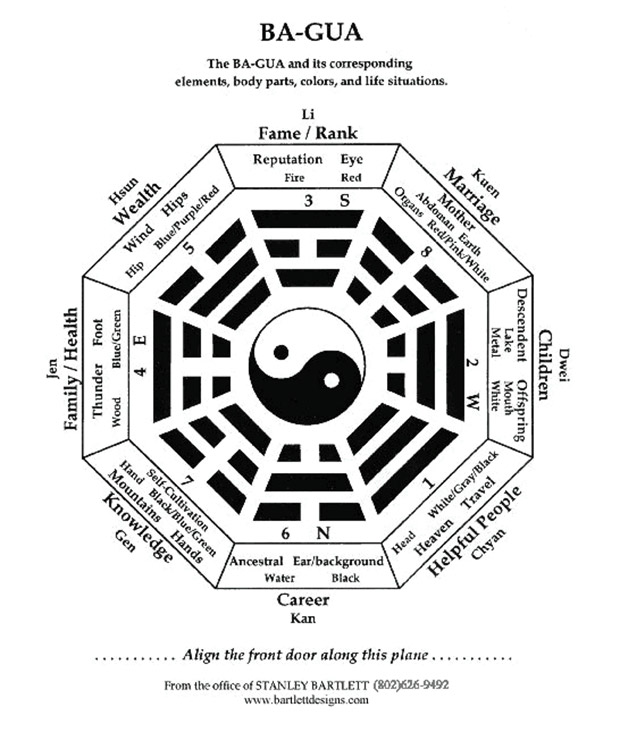
Image Source: Barlett & Associates
We don't even know the origins of most of them, or what they represent. For some of them, we may even have it completely wrong. We'll now be taking a look at some more unique symbols:
The Ampersand
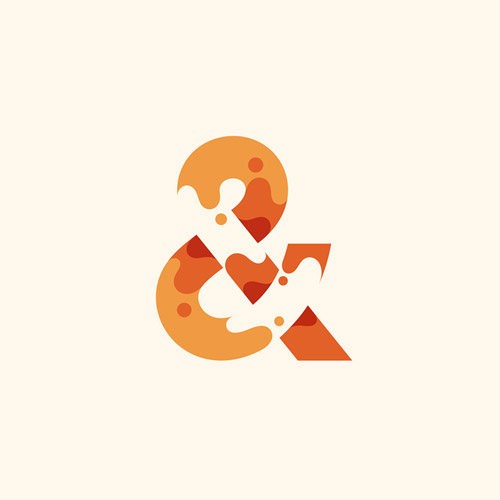
Image Source: Dribbble
The Pentagram
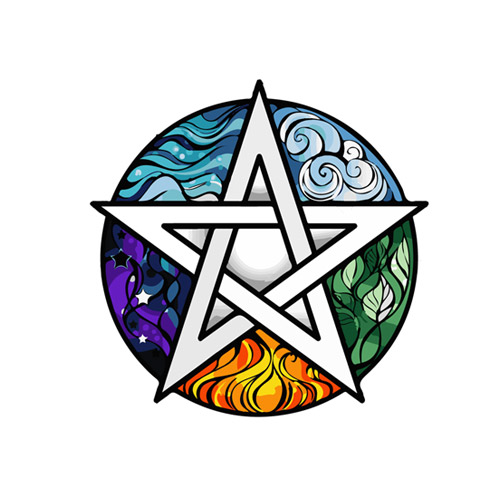
Image Source: Mythologian
The Double-headed Eagle
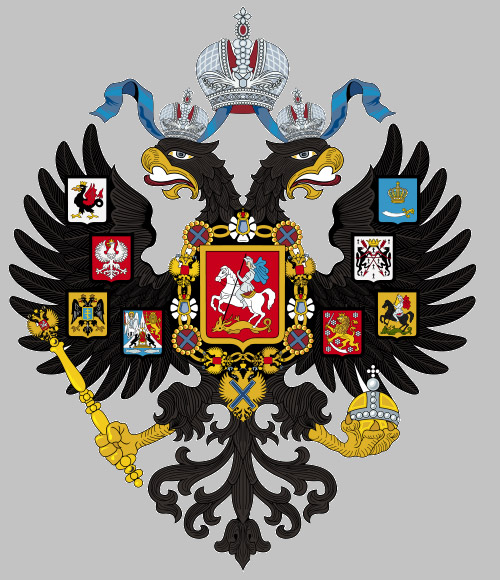
Image Source: Allrus
The Circle

Image Source: ZillionDesigns
The Ichthys Or Jesus Fish
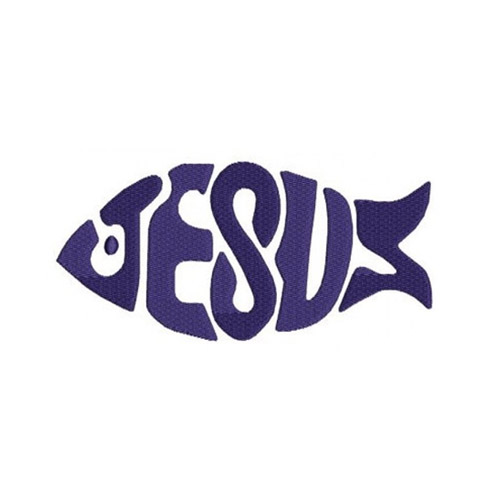
Image Source: Pinterest
The Pi

Image Source: Pngkey
Fleur de Lis
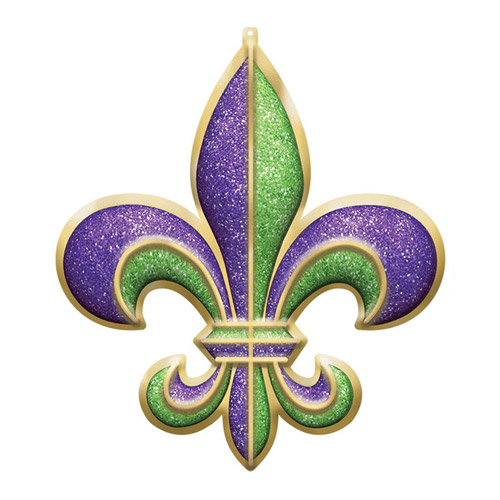
Image Source: Home Depot
Caduceus

Image Source: ZillionDesigns
Wireless Symbol

Image Source: ZillionDesigns
Many famous logos have hidden meanings and their shapes tell interesting and exciting stories. Some of the above-mentioned symbols can be easily used in logos from many industries. Now, you should know that symbols are not just shapes, there are meaning and uses of colors as well and each hue has some emotional or intellectual standpoints in different cultures and settings.
You should know that each industry has a set of symbols. This said symbols can also derive from where the business, organization, or brand is from. Also, country logos make us of famous symbols that people in that country recognize.
As designers, it becomes even more important to us that we understand the meanings behind symbols and know what they stand for. The more knowledgeable a designer, the more thorough their understanding will be of different symbols, their meanings, their origins, and their relationships. And this knowledge is essential for a designer to do their job well.
Since symbols are so deeply linked with our everyday lives, even a novice or a regular person on the road knows what some of the world's most famous symbols mean. Elements of design come handy when designing symbols for construction businesses, for instance. What brings it all together is how you use color, shape, and line, for instance, to create new and existing symbols for a variety of business logos and graphic icons.
Each industry as a set of dedicated symbols most businesses use to design a brand identity. When creating a professional logo design, symbols are used to share a message concisely and attractively. Many startups and small businesses adorn their logo designs with geometric or organic symbols, anything that represents their brand the best.
But do we know where those meanings have originated from? Do we know if these symbols were always meant to portray these meanings, or were intended to mean something else altogether? Can you shine some more light on these symbols?
Let us know in the comments below.
Fashion Apparel Logos
Jewelry Shop Logos
Antique Shop Logos
Painter Logo Designs

Source: https://www.zilliondesigns.com/blog/famous-symbols-stories/
0 Response to "Cool Designs Cool Easy to Drw Designs That Have to Do With Ticks"
Mag-post ng isang Komento